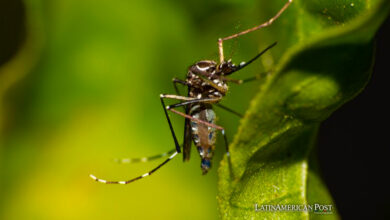What Are the Considerations To Authorize a Death With Dignity?
Exercising the right to a dignified death is not easy, especially when only seven countries have legalized euthanasia.

The Woman Post | Carolina Rodríguez Monclou
Listen to this article
This practice is legal in Belgium, Canada, New Zealand, Spain, Luxembourg, the Netherlands, and Colombia. As PBS NewsHour points out, "Doctors say euthanasia gives terminally ill patients experiencing constant and unbearable suffering a practical and humane way to die peacefully."
The Right to Die with Dignity
Martha Sepúlveda is a 51-year-old woman from Colombia who has Lou Gehrig's disease. The most common scenario for people with this condition is to lose the ability to walk, talk, and ultimately breathe while the mind remains fully intact. Sadly, there's no known cure. A famous person who also had ALS was Stephen Hawking.
Colombia is the only country in Latin America that has legalized euthanasia. Sepúlveda had her appointment for this procedure on October 10th, 2021, at 7 am. Nevertheless, as her case became viral, her euthanasia was canceled after the medical committee assured her that she no longer met the conditions since "apparently, her health has improved."
The Colombian government began regulating the practice in 2015, 18 years later of being decriminalized. However, the procedure is only available for people with a terminal illness. Sepúlveda was about to become Colombia's first-person without a terminal prognosis to die by legally authorized euthanasia.
What Requirements Are Needed for Euthanasia?
During an interview with JAMA Network, Ezekiel J. Emanuel, Chair of the Department of Medical Ethics and Health Policy at the University of Pennsylvania, reviews the legal status of euthanasia and goes deep regarding the process for this procedure.
Regardless of the country, this practice is not very widespread. As proof of it, even in Belgium and Netherlands, less than 5% of all deaths are by this intervention.
According to Dr. Emanuel, 70% to 75% of people who end their life by euthanasia worldwide tend to be cancer patients. The candidates for this procedure are those writhing in extreme pain where the suffering cannot be controlled with medications.
People who go through this worry about losing autonomy and dignity and no longer enjoy life activities. Although some think that euthanasia is a quick, painless, and flawless intervention, that is not true. The research suggests that there is a not insignificant rate of complications and problems with this procedure.
Also read: CONTROLLING OUR EMOTIONS
The Dutch Approach
Regarding who is eligible for euthanasia, it depends on the regulations in each country. Here are some of the conditions in the Netherlands to approve this practice:
-The patient's suffering must be unbearable, without any sign of improvement.
-The patient's request for euthanasia cannot be granted when under the influence of others. It has to be persistent and voluntary.
-The patient must be fully aware of his or her options, condition, and prospects.
-Another independent doctor must confirm the conditions mentioned above.
-The doctor must be present, and the intervention must be done in a medically appropriate way.
-The patient must be above 12 years old. In the Netherlands, euthanasia can be performed in kids from 12 to 16 years old with the consent of their parents.
Although this topic can be very controversial is essential to know the medical reasons behind these decisions and the countries in which is allowed.




